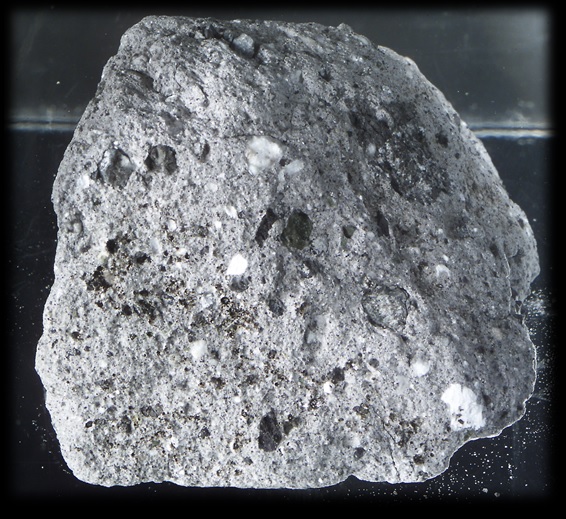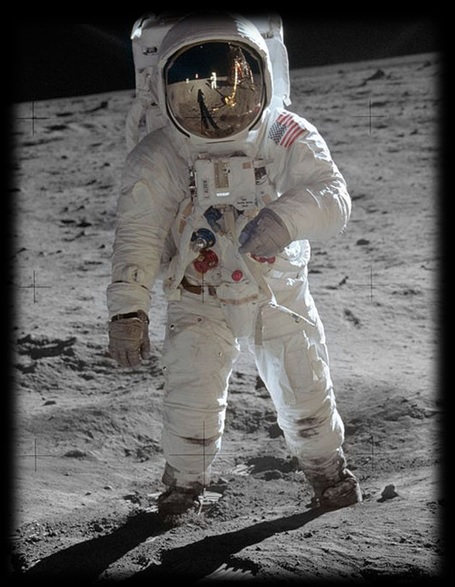



The term “Mile High Club” is synonymous with amorous adventurers who consummate their affairs - usually in an aircraft - more than 5280 feet above the ground. No one knows just how many people have ever achieved this feet – the Guinness Book of World’s Records doesn’t categorize such activity. But one thing’s for sure, only two people have ever had such interludes on the lunar surface.
To proclaim moon rocks as some of the most unique items in the world would be an understatement. Besides where they originate from and how hard they are to obtain, what makes the stones so unique is they have never been exposed to oxygen.
Astronaut Neil Armstrong began scooping up the stones before Buzz Aldrin even made it down the ladder of Apollo 11. His collection started a practice continued by every astronaut to walk on the moon since.
So who officially owns these out of this world stones? The American people and they are considered a national treasure.
NASA was the first to begin studying the stones but with subsequent missions creating an ever growing stockpile, the space agency began to get requests from laboratories, museums and other nations. Even everyday citizens ranging from middle class families to wealthy collectors began contacting NASA. Everyone wanted a piece of the moon.
To satisfy the requests of other countries, President Richard Nixon began a goodwill program of lending moon rocks. Unfortunately, record keeping in some of the recipient countries wasn’t what it should be and some of the rocks are unaccounted for. To date, of the 270 rocks lent by the Nixon administration, 180 are currently listed as missing.
Under federal law no one can buy, sell or possess a moon rock. It is also a crime to sell anything purporting to be a moon rock. Unfortunately, such a high level of restriction creates a greed driven black market for scammers and thieves.
One of the most notorious cases involved a sample presented to Honduras in 1969. This sample turned up during a sting which was designed to catch dealers of fake lunar samples. To the agents’ surprise, they were offered a genuine lunar rock for $5 million. A meeting was arranged and the rock (and presumably, the seller) was seized. Another lunar sample was stolen from a museum in Malta between 1990 and 1994. It was recovered in a 1998 sting operation.
Over the years a number of people have been arrested trying to pass off stones as authentic moon rocks. Then came an event most people never thought possible.
June 2002. The Johnson Space Center was closed for the evening. Staffed only by a skeleton crew, NASA interns Thad Roberts – a highly intelligent astronaut hopeful pursuing degrees in physics, geology, and anthropology - and Tiffany Fowler used their employee passes to access Building 31 North. Once inside, the pair took a carefully planned route through security camera blind spots to make their way to an inner room with a cypher lock. Having already coated the keys with florescent dust, Roberts used a black light to quickly reveal which buttons to push. Once inside Roberts found a locked safe. Unable to open it, he grabbed a heavy duty dolly and carried the entire 600 lb. safe containing sets of moon rocks from every Apollo mission right out the door and into his jeep.
The pair then drove right out the front gate of NASA making sure to wave to the armed sentry as they passed.
Back at Robert’s apartment they spread the moon rocks on the bed and achieved what no other human being can ever lay claim to.
With such a valuable trove, there was no way the greedy pair could sit idly by and not try to cash in. Roberts soon advertised the rocks on a European mineralogy club website. An amateur Belgian collector named Axel Emmermann saw the rocks and quickly contacted the FBI. After reconciling the advertisement might not be a prank, agents set up contact with Roberts and arranged a meeting.
July 20, 2002, was the 33rd anniversary of the Apollo 11 landing. FBI agents used that date to take over an entire Orlando Florida restaurant for a meeting with Roberts.
The sting operation almost fell apart before it got started. Roberts arrived to find a family restaurant close to several major tourist destinations with no children inside. Despite his suspicions, greed got the best of him and Roberts quickly agreed to escort the undercover agents back to his hotel room to sell them the 101 grams of moon rocks. It was there he was swarmed by everyone he had previously seen at the restaurant and taken into custody.
A search of his hotel room recovered the missing lunar samples valued at more than 5.1 million dollars. The value was based on the $50,800-a-gram cost that taxpayers paid in 1973 dollars to collect the specimens during Apollo lunar missions. Adjusted for inflation, each gram would be worth $206,000 or about $21 million.
FBI agents soon discovered evidence that led to Roberts being charged with stealing dinosaur bones and other fossils from his alma mater, the University of Utah.
Tiffany Fowler and fellow intern Shae Saur and accomplice Gordon McWhorter were later arrested for their roles in the theft and attempted sale of the rocks.
Unfortunately for our national treasure, exposure to oxygen has ruined their scientific value.
The brazen theft ultimately became was the subject of Ben Mezrich's book “Sex on the Moon: The Amazing Story Behind the Most Audacious Heist in History.”
For his crimes Thad Roberts received 100 months in federal prison. His accomplices were handed three years’ probation. When asked why he did it, Roberts confessed he was in love with Fowler and had promised her the moon.
In this case he delivered it – if only for a short period of time.





